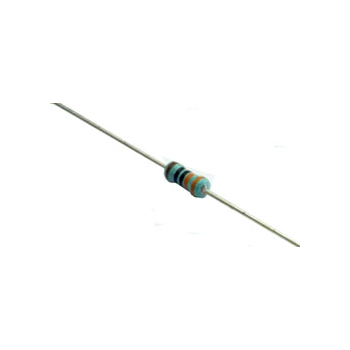You probably already know this but the frequency from our VCO should double for each increase in octave step. For example, in the UK and the US, the frequency for the 'A' above middle 'C' is 440Hz, the 'A' on the octave above is 880Hz and the 'A' on the octave below is 220Hz. This is a non-linear response (exponential) although due to the nature of the human ear, it actually sounds linear to us.
The voltage input to a voltage controlled oscillator (VCO) tends to be linear, i.e. 1V/octave, we need a circuit to convert this into the exponential response, typically this is achieved by using the characteristics of the junction of a transistor (or pair). This circuit allows the voltage to be converted from a linear response into an exponential current. This is fine except for one important fact, the transistor junction is very temperature sensitive which does not help in keeping your synth in tune as the temperature changes.
The MFOS synth uses a special kind of resistor whose resistance changes with a known characteristic that is used within the VCO circuitry to compensate for the transistor drift to maintain the VCO in tune.
These PTC (positive temperature coefficient) 2k 3300ppm resistors will increase in resistance as the temperature increases by 0.33% per degree centigrade which is 6.6 ohms / C if the maths is correct.
Best to thermally bond (with heatsink compound) these PTC resistors to the transistors and even better is to then enclose the transistors / resistor with a protective hood to shield from stray air currents. Ray Wilson at MFOS explains this far better at his site.

